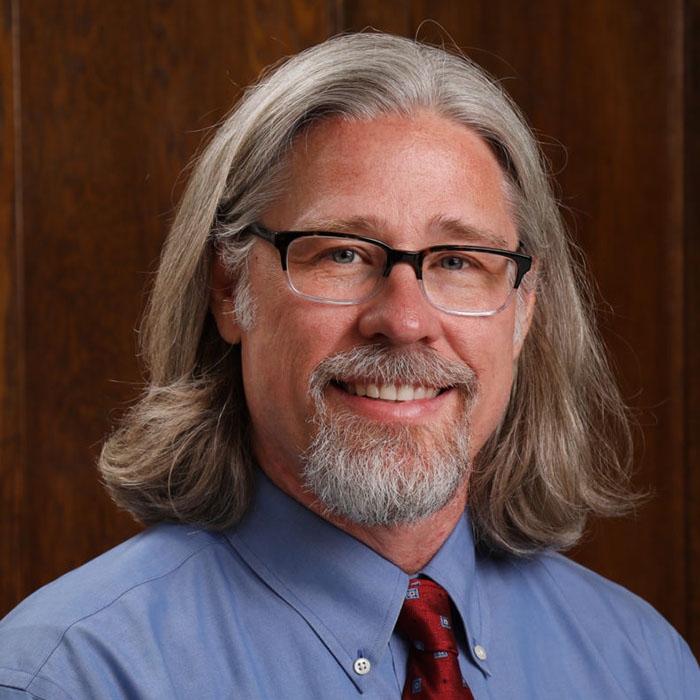Our association is a robust and diverse set of educators, researchers, medical professionals, volunteers and academics that come from all walks of life and from around the globe. Each month we choose a member to highlight their academic and professional career, and see how they are making the best of their membership in IAMSE. This month’s Featured Member is IAMSE member Thom Gaddy, PhD.

Thom Gaddy, Ph.D.
Medical Science Educator (Associate Professor of Histology and Cell Biology)
Augusta University/University of Georgia Medical Partnership
How long have you been a member of IAMSE?
I first joined IAMSE in 2009, just after being hired for my current position at the Augusta University/University of Georgia Medical Partnership.
Looking at your time with the Association, what have you most enjoyed doing? What are you looking forward to? Committee involvement, conference attendance, WAS series, manuals, etc.?
Since joining the Association I’ve served on the Review Committee and for the past several years I been reviewing manuscripts for Medical Science Educator. I’ve attended most of the annual meetings, and this is probably what I have enjoyed and look forward to most since becoming a member. The meetings have played a big role in my professional development by facilitating the sharing of scholarship, which, in turn, has helped spawn new ideas about how to improve my teaching. Of course, I also enjoy the opportunity the annual meeting provides to reconnect with former colleagues and friends and making new acquaintances as well.
I have also enjoyed being part of the WAS committee. An extremely dedicated group of people with significant connections around the US. They work hard at bringing interesting topics to the membership and the individuals best positioned to give us the latest in this area.
What interesting things are you working on outside the Association right now? Research, presentations, etc.
Right now I am working on several interesting projects. Our teaching facilities recently underwent a major renovation as our incoming class size is incrementally increasing from 40 to 60 students, and as part of that renovation, we have built a 5-bay, high-fidelity simulation suite. I’ve volunteered to participate in our Sim program as a manikin operator. Since our students are participating in these simulation exercises very early—in the Fall semester of their first year—we’ve been very intentional about including foundational science educators in authoring and implementing these cases, and it’s been rewarding to see how quickly the students come to appreciate how foundational science knowledge plays into their clinical decision-making during those clinical scenarios.
Another project that I’ve recently started working on is the StatPearls education initiative, where I am serving as an Editor-in-Chief for the Medical Student Histology resources. StatPearls was initially developed to provide free and low cost continuing medical education opportunities to practicing physicians but has now expanded to include all the disciplines in undergraduate medical education as well. So far I’ve been really impressed with the work of my predecessors and looking forward to providing my own expertise and resources to help this effort move forward.
IAMSE welcomes educators from multiple disciplines and backgrounds. How would you say being an IAMSE member has helped you become better in the field of Biology/Anatomy?
Oh boy, IAMSE has had a huge influence on my development as a medical science educator. Although the Medical College of Georgia (now part of Augusta University) was founded almost 200 years ago, I was one of the initial cohort of faculty that was hired to work at the new 4-year campus where we were essentially developing our curriculum from scratch. During my Ph.D. training, I had a great mentor and experience as a graduate teaching assistant that really helped me to develop and solidify my histology knowledge, and afterward, I had gained teaching experience as an assistant professor at two different liberal arts universities. What I lacked, though, was seeing “the big picture” of how a medical curriculum worked; and also, like many others, I wasn’t fully prepared for the wave of medical education reform that began about a decade ago and continues to take place today. Quite frankly, I was pretty bummed when I realized I wasn’t going to be able to teach a lot of the fundamental content knowledge within my discipline that, at the time, medical students were expected to learn. That’s where IAMSE came in. Hearing about all the new ideas and what others were doing to push the envelope, helped me to recognize that even though the time spent teaching in my discipline was going to be much less than what I had expected, there was value in many of these reforms, integration in particular, and opportunities to grow as an educator.
Anything else that you would like to add?
Just a big thank you to IAMSE—its leadership and all of its membership. It’s a true joy to be part of such a robust and vibrant organization.